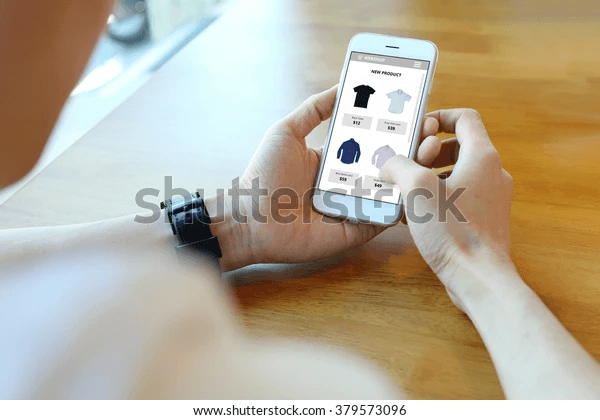In an era where convenience is king and digital tools are readily accessible, it’s no surprise that online shopping has experienced unprecedented demand. According to the U.S. Department of Commerce, 2021 eCommerce sales totaled an estimated $870.8 billion–a 14.2% increase from one year prior. It is a fact that digital merchandising remains a challenge for many online stores. This is due to rife competition that’s only one click away.
Online merchandising lacks the physical experience and sensory engagement that in-store shopping offers. This makes it imperative to have an effective digital merchandising strategy incorporating online product display, branding, and site functionality. These strategic elements should work in tandem to entice browsers to follow through on purchases.
This guide highlights three common merchandising challenges in 2022, and how to effectively combat them to build a superior eCommerce brand.
Challenge #1: Your Home Page Is Not Optimized for Customer Conversion
Your eCommerce homepage is the front door of your business. It’s your greatest opportunity to convey your brand’s essence and establish connections with potential customers. When done properly, an eCommerce homepage facilitates the shopping experience by displaying new promotions and products, encouraging e-mail sign-ups, and converting visitors into customers.

Many companies, however, invest in an effective homepage but fail to prioritize its continual maintenance. Statistics show that approximately 30% of websites begin with perfect homepage performance. Over time, the efficacy of these pages drops to only 17% because companies don’t update their websites to meet consumer demand, much less pique interest.
When designing and managing your eCommerce homepage, implementing the following practices will help your site to stand the test of time, maintain influence, and keep consumers coming back for more.
Design for Mobile-First
With mobile eCommerce on the rise amidst fierce competition, eCommerce websites must implement a mobile-first digital merchandising strategy. This involves designing the site for smaller screens first and adapting it for larger screens later on.
This type of responsive design enables on-site elements to adjust automatically, offering seamless viewing and navigation across devices. Minimizing the need for site-goers to adjust their devices/screens elevates the user experience.
Optimize Loading Speed
The longer the page takes to load, the more likely a viewer is to abandon it for a competitor. According to Google, the probability of users leaving your site increases by 106% as the page load time is delayed by 1 to 6 seconds. Ideally, your load time should be under 3 seconds to prevent visitor loss.
Optimize Search Functions
By not optimizing the search function to simplify the shopping experience, you can lose ready-to-buy customers in the blink of an eye. Unnecessary additional steps in site navigation or purchasing negatively impact the shopper’s experience. This mounting frustration can quickly drive them to a competitor’s site.

Highlight Popular Items
A product’s popularity is perceived as a testimony to its great value and benefits. Showcasing the most popular products on your e-store homepage attracts potential shoppers and entices them to explore other items.
Challenge #2: You Are NOT Personalizing Your Product Recommendations
Beyond optimizing your homepage, tailoring how you present your product/service to each customer is the best way to personalize the user experience.
Product recommendation engines utilize a set of algorithms that individualize the buyer’s experience by showcasing products they are most likely to be interested in. This is based on their geographic location, products viewed, shopping history, etc. Products can be recommended by highlighting best sellers, frequently bought together items or trending products.
Although personalized marketing can improve satisfaction and brand loyalty, it’s important to remember that customer preferences and needs are constantly evolving. For this reason, personalization is not a static endeavor; it requires frequent adjustment to stay relevant and keep consumers engaged.
The value of browser product recommendations increases with the support of other features–which should be integrated throughout the customer journey. This may include luring customers with personalized landing pages, sending e-mails with interest-specific offers, or providing real-time assistance and on-point after-sales service.
Challenge #3: Your Visual Merchandising Strategy Is Not Driving Sales
Digital merchandising is not only about making your site aesthetically pleasing. Its core principles are based on implementing aesthetic features that are supported by psychological research.

The best practices to nurture buying intent and guide viewers down the purchase path include incorporating thematic galleries, optimizing product filters, and adding videos.
Thematic galleries put items in context. This helps customers see what options are available and get a more accurate idea of what the products look like in real life. For example, placing teapots next to each other on a display image will allow customers to compare sizes. The teapots can also be grouped in types or themes, like by material or color. Product filters can further narrow down the searches.
Including videos and animations as part of your visual merchandising strategy allows you to showcase items from different angles and in motion. Include detailed descriptions, a variety of high-quality images, user-generated content, and product recommendations to facilitate consumer confidence.
Choose the Right Tool for the Job
With guidance through product selection and up-selling or cross-selling, closing the deal without delay is essential. Remember that overdoing cross-sell recommendations can be a distraction. Maintain a balance in driving the shopper toward the checkout and recommending complementary items.

A March 2021 study revealed that nearly 80% of eCommerce customers have abandoned a shopping cart before completing the purchase. Considering the investment it takes to get them that far, losing a customer at the very last stage of the purchase journey is a costly loss.
Payment options should be convenient and efficient. The fewer clicks required, the faster and more streamlined the checkout process. Showcasing logos of popular payment merchants that your site supports facilitates security confidence and establishes consumer trust.
If customers leave the site without completing the checkout process, follow up with automated pop-ups or support emails to reach out to the client while they are still in ‘purchase mode’.
Strategic Digital Merchandising With a Single Tool
Here at Zobrist, we recognize that digital merchandising is a complex, ongoing responsibility – so much so that we’ve designed an all-in-one tool to enable businesses to excel at it. Smart Merchandiser incorporates trend analysis, catalogs design, layout, color management, social analytics, and inventory management. In addition, you gain access to personalized marketing, strategic merchandising, and real-time analytics for growth-directed design. Schedule a demo with Smart Merchandiser so you can work smarter with an effective, sales-boosting digital merchandising strategy.



